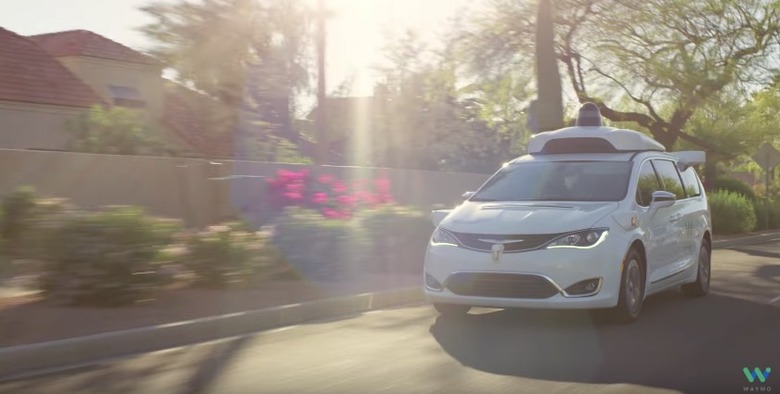Report: Waymo's Driverless Cars Aren't As Smart As Everyone Thinks
Waymo, Google's vaunted driverless car spinoff, is widely regarded to be at the forefront of driverless car development. While Uber was busy killing a pedestrian with its dubiously-safe testbed this year, Waymo was driving real people around in fully driverless cars in a suburb of Arizona. At Google's keynote I/O conference in May, the company showed off its developments in foul-weather testing and revealed plans to launch a commercial autonomous ride-hailing service in Arizona by the end of the year.
Fully driverless cars, we all assumed, were just around the corner.
But according to a new report from The Information, Waymo's cars haven't transformed Arizona's streets into the kind of tech utopia everyone imagined. According to the reporter, local drivers are actually kinda pissed at having to deal with Waymo's cars:
More than a dozen local residents who frequently encounter one of the hundreds of Waymo test vehicles circulating in the area complained about sudden moves or stops. The company's safety drivers—individuals who sit in the driver's seat—regularly have to take control of the wheel to avoid a collision or potentially unsafe situation, the people said.
The article suggests that while Waymo's AI might be good enough to drive without mowing down pedestrians or merging into a highway divider, it's still struggling to get the nuances of driving — and driving around a bunch of unpredictable humans — down pat.
The report is a good look at the challenges that driverless cars are still going to face, and how it's going to get worse as Waymo expands out of dry, flat, low-traffic suburban Arizona and into mountains, high-speed backroads, and logjam highway traffic. It doesn't mean that driverless cars aren't going to happen; Rather, it's just a reminder that while driverless cars might be 90% there already, it's the last 10% that will prove to be the hardest to master.
